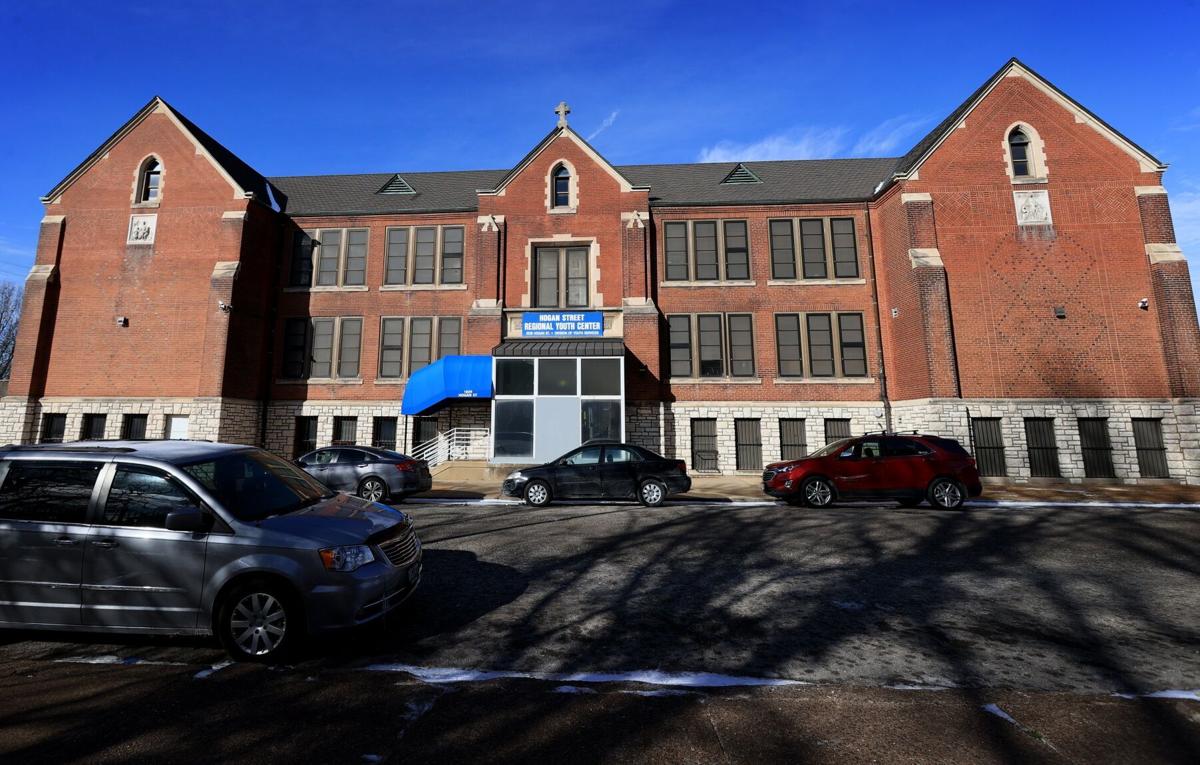JEFFERSON CITY ŌĆö A state-run youth detention facility in north ║³└Ļ╩ėŲĄ, the scene of multiple escapes in recent years, may be shuttered under a plan backed by Gov. Mike Parson.
In his State of the State speech last month, the Republican chief executive called on lawmakers to approve $7.2 million in new spending to construct a new youth center in the ║³└Ļ╩ėŲĄ region that includes classrooms, dormitory space, a kitchen and offices.
If approved, the new facility would replace the Hogan Street Regional Youth Center, which is operated by the Missouri Department of Social Services.
The Hogan Street facility has outlived its usefulness, officials said.
People are also reading…
ŌĆ£It makes a lot of sense to do a replacement,ŌĆØ said Scott Odum, director of the DSS Division of Youth Services.
While many of the stateŌĆÖs juvenile facilities operate out of the limelight in the $60 million per year juvenile justice division, Hogan Street has been in the news for escapes.
In June 2022, an 18-year-old man broke his ankles and fractured his spine while trying to run away.
In 2021, a teenager was charged after prosecutors say he and four other boys overpowered unarmed staff, forcing their way out of the building and taking two cars belonging to staff members.
The 35,100-square-foot building previously existed as a school for St. Liborious Catholic Church, which closed in 1992. The buildingŌĆÖs three dormitories are located on the second floor.

David Carson, Post-Dispatch
In recent years, there have been multiple successful escape attempts at the Hogan Street Regional Youth Center at 1839 Hogan Street in ║³└Ļ╩ėŲĄ, pictured here on Wednesday, Feb. 1, 2023. It is being considered for closure and replacement in a plan backed by Gov. Mike Parson.
For now, the agency isnŌĆÖt publicly saying whether it has a new site in mind.
ŌĆ£I would say everythingŌĆÖs on the table,ŌĆØ Robert Knodell, director of DSS, said in an interview with the Post-Dispatch.
Juvenile justice programs operate under what is known as the ŌĆ£Missouri Model,ŌĆØ which places an emphasis on rehabilitation in small group settings with minimal physical force.
In 2021, the most recent year available, 86% of the youth released from custody did not return to the department of the adult prison system one year after release.
Not every case is a success story. In January, a teenage boy from Florissant pleaded guilty in ║³└Ļ╩ėŲĄ juvenile court to shooting at police while trying to flee in a stolen vehicle.
Judge Barbara T. Peeples declined to certify the 17-year-old as an adult. She ordered him committed to the Division of Youth Services until he turns 18.
In testimony prior to the decision, officials said the boy had 21 prior referrals to the juvenile court system, mainly in ║³└Ļ╩ėŲĄ County, where heŌĆÖd received numerous services. He previously ran from the Hogan Street facility.
In an interview with the Post-Dispatch, the boyŌĆÖs grandmother said he lived with her in Florissant. She said he was ŌĆ£jumpedŌĆØ at Hogan, which motivated him to escape from the secure facility.
ŌĆ£My grandson ran because they were jumping on him,ŌĆØ the grandmother said.
The agency, meanwhile, wants to keep the new facility within the orbit of the ║³└Ļ╩ėŲĄ region to keep youth close to home and to keep workers close to their job sites.
ŌĆ£WeŌĆÖd like to stay in the existing area,ŌĆØ Odum said.
Hogan is designed to hold three groups of eight to 10 youths. But because of staffing levels, instead of 30 kids, there are 14. Across the division, there is money to operate 50 groups, but only 38 are in place due to limited staff.
With salary hikes and increased hourly pay for overnight workers, hiring may be on an upswing.
ŌĆ£WeŌĆÖre close to some stability on the staffing front,ŌĆØ Odum said.
According to the agencyŌĆÖs budget request, turnover in the youth division was at 48%, meaning nearly half of the workers came and left within the year.
Of those, the frontline youth specialists who deal directly with the juveniles had the highest rate of turnover, according to the agencyŌĆÖs budget request.
The number of youth sent to the juvenile centers has dropped dramatically in recent years. Last year, the facilities were home to an estimated 913 youth, down from more than 1,400 in 2017.
That drop could be due to the effects of the pandemic on policing and court operations, which may have reduced the number of commitments to the state facilities.
In June 2020, the majority of youth housed at Hogan Street tested positive for COVID-19.
Fifteen of 28 residents at the center had active infections at the time, while eight of 42 staff had active infections.
The pandemic challenged MissouriŌĆÖs model for handling juvenile offenders.
Under the state program, youth are housed in dormitories rather than in individual rooms. That made it easier for COVID-19 to be transmitted among the residents and staff.
For workers, entering the facilities was ŌĆ£a big ask.ŌĆØ
But, Odum said, ŌĆ£They did very hard work for a very long time. Our culture is intact.ŌĆØ
Jesse Bogan of the Post-Dispatch contributed to this report
A selection of photos from 2022 by Laurie Skrivan, who has covered ║³└Ļ╩ėŲĄ from nearly every angle as a Post-Dispatch staff photographer since 1998. She won the 2017 Robert F. Kennedy Journalism award domestic photography and was a member of the 2015 Breaking News Photography Prize awarded to the ║³└Ļ╩ėŲĄ photography staff.













